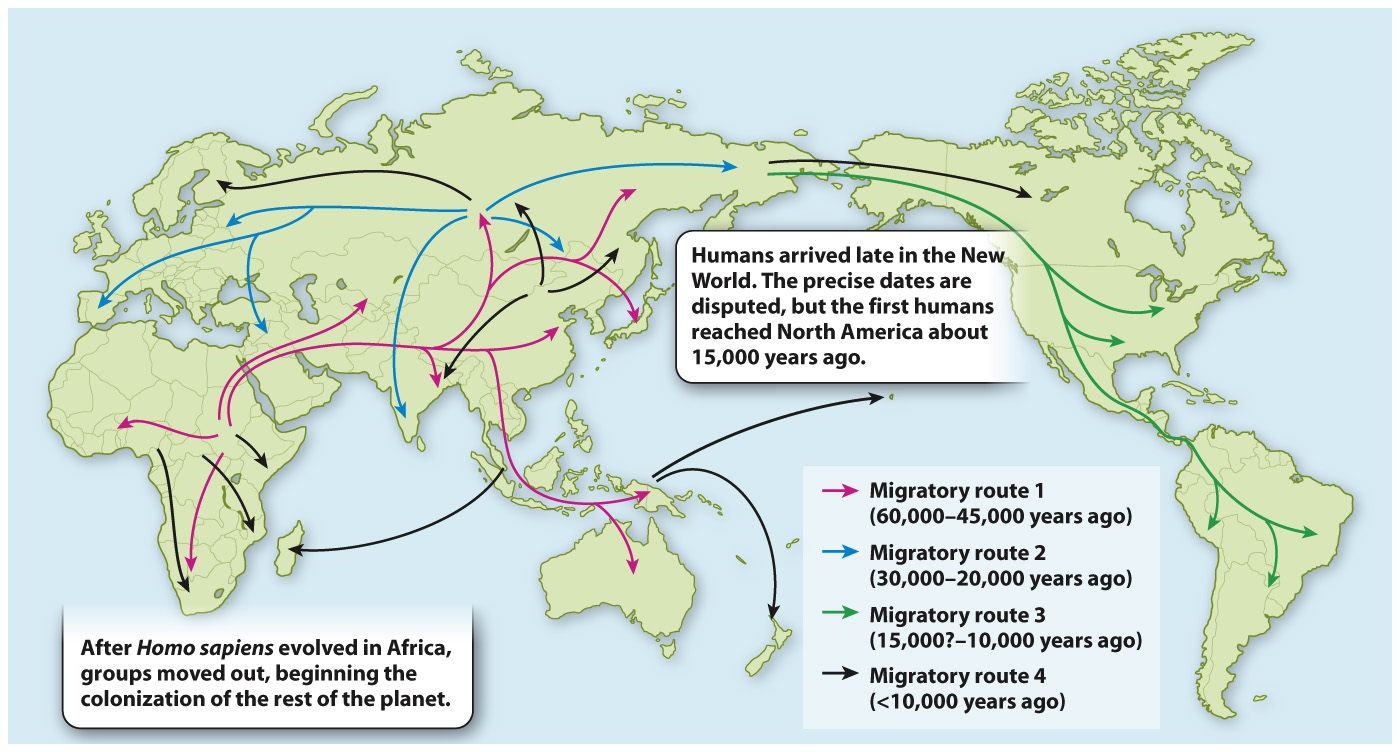The prehistory of our species has had an impact on the distribution of genetic variation.
The reasons for our species’ relative lack of genetic variation compared to other species lie in prehistory, and factors affecting the geographical distribution of that variation also lie in the past. Studies of the human family tree initiated by Rebecca Cann’s original mtDNA analysis are giving a detailed picture of how our ancestors colonized the planet and how that process affected the distribution of genetic variation across populations today. Detailed analyses of different populations, often using mtDNA or Y chromosomes, allow us to reconstruct the history of human population movements.
As we have seen, Homo sapiens arose in Africa. Genetic analyses indicate that perhaps 60,000 years ago, populations started to venture out through the Horn of Africa and into the Middle East (Fig. 24.15). The first phase of colonization took our ancestors through Asia and into Australia by about 50,000 years ago. Archaeological evidence indicates that it was not until about 15,000 years ago that the first modern humans crossed from Siberia to North America to populate the New World.

Genetic analyses also indicate that other colonizations were even later. Despite its closeness to the African mainland, the first humans arrived in Madagascar only about 2000 years ago, and the colonists came from Southeast Asia, not Africa. Madagascar populations to this day bear the genetic imprint of this surprising Asian input. The Pacific Islands were among the last habitable places on Earth to be colonized during the Polynesians’ extraordinary seaborne odyssey from Samoa, which began about 2000 years ago. Hawaii was colonized about 1500 years ago, and New Zealand only 1000 years ago.
By evolutionary standards, the beginning of the spread of modern humans out of Africa about 60,000 years ago is very recent. There has therefore been relatively little time for differences to accumulate among regional populations, and most of the variation in human populations today arose in ancestral populations before any humans left Africa. When we compare levels of variation in a contemporary African population with that in a non-
500